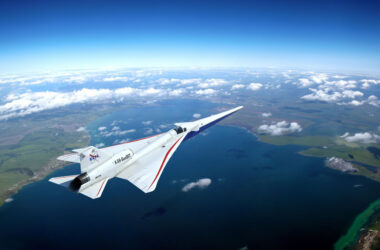The European Space Agency plans to launch a new space vehicle this Wednesday that could potentially challenge existing technology.
Scheduled to launch on a Vega rocket from Kourou in French Guiana the IXV (Intermediate eXperimental Vehicle) – a so-called Space Taxi – is the first European initiative by ESA to build a smaller alternative to NASA’s now defunct Space Shuttle programme.
The smaller format of IXV is expected to lower costs associated with construction and launch, while the controlled return to Earth means the spacecraft can be re-used.
British input into the project has come from QinetiQ, whose space division has supplied the on-board computer designed to ensure IXV’s fully automated return to Earth, a manoeuvre typically beset with unique challenges.
For example, IXV will be travelling at around 7.5km/s on re-entry to Earth’s atmosphere, with friction slowing the aircraft. If the angle of entry is too steep the craft will burn up, and if it is too shallow the IXV won’t reach its designated landing place.
As ESA says on its website, ‘accurate guidance, navigation and control is everything’, given that IXV must come in at the right angle and keep within a ‘re-entry corridor’.
An interesting aspect of the IXV is that it has been designed without wings and instead will use its aerodynamic shape to produce lift to fly through the atmosphere on re-entry. Flaps and thrusters will then autonomously steer IXV to splashdown at a precise point in the Pacific Ocean.Source: ESA Tanskanen
Future missions will see IXV come to rest on land and those flights will have been informed by an infrared camera and 300 sensors integrated onto the maiden launch vehicle to map the flow of heat across panels that cover the underside of the vehicle that will have to withstand temperatures of around 1,700ºC on re-entry.
Qinetiq was commissioned for the ESA project by Thales Alenia Space and Alenia-Aermacchi. If successful, IXV could find a myriad of uses including the more economical transport of cargo and astronauts into space and back. Further uses are envisaged including increasing the lifespan of existing satellites, monitoring the Earth, testing new technologies and performing fundamental research in space.
In related territory, the US Defense Advanced Research Projects Agency (DARPA) is proposing the launch of satellites from conventional aircraft into low Earth orbit at a cost of $1m per launch. Take a look at the following video for an animated demonstration of how ALASA (Airborne Launch Assist Space Access) would work.
DARPA’s Airborne Launch Assist Space Access program (ALASA) seeks to propel 100-pound satellites into low Earth orbit (LEO) within 24 hours of call-up, all for less than $1m per launch. The current ALASA design envisions launching a low-cost, expendable launch vehicle from conventional aircraft. Serving as a reusable first stage, the plane would fly to high altitude and release the launch vehicle, which would carry the payload to the desired location. The program is moving ahead with rigorous testing of new technologies that one day could enable revolutionary satellite launch systems that provide more affordable, routine and reliable access to space








